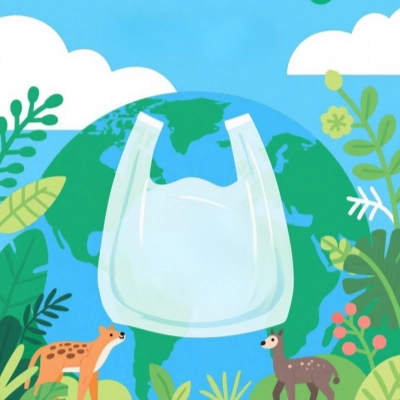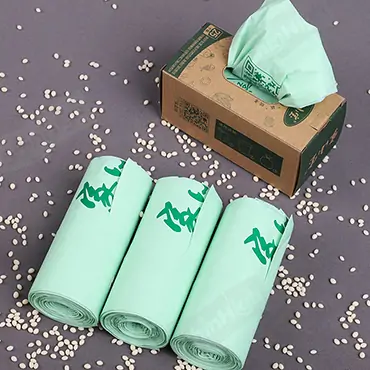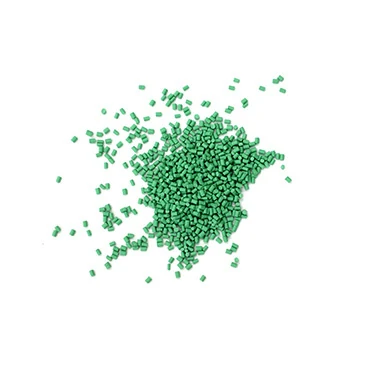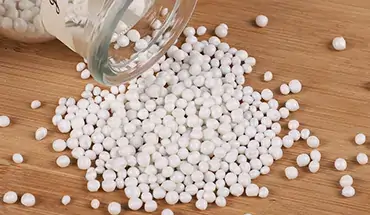As a professional involved in packaging distribution, supply, or usage, you’re undoubtedly navigating the significant shift towards sustainability. You’re likely exploring, or perhaps already utilizing, compostable bags – the prominent eco-friendly alternatives challenging conventional plastics. Yet, a critical question inevitably surfaces, particularly when analyzing invoices or comparing supplier quotes: “Why do compostable bags often carry a higher price tag?”
It’s a valid inquiry. While lauded as the greener choice, the higher cost of compostable bags compared to their traditional counterparts is a consistent observation across the industry. It prompts the question: is this premium merely a reflection of their growing popularity and environmental appeal, or are there more fundamental factors driving the compostable bags’ prices?
The reality is rooted firmly in the latter. The journey of a compostable bag – from its plant-based origins to the finished product ready for use – differs significantly and is often inherently more complex than that of conventional petroleum-based plastics. Let’s examine the specific factors that contribute to the overall cost structure and pricing of compostable bags.
The Rise of Green Choices: Why We’re Even Asking About Compostable Bag Prices
In recent years, the conversation around packaging has undergone a significant transformation. Concerns regarding plastic pollution impacting oceans and landfills have moved from peripheral awareness to a primary global issue. Heightened consumer awareness, increasingly stringent regulations, and corporate responsibility initiatives are compelling businesses to actively seek and adopt more sustainable packaging solutions.
The Shift Away from Traditional Plastics
The ubiquity of single-use conventional plastics was once standard practice. However, the environmental implications are now widely recognized. There is widespread understanding of the environmental footprint left by plastics derived from fossil fuels – materials that can persist in the environment for centuries. This heightened awareness has spurred significant demand for alternatives designed for environmental compatibility. This demand has led to the rise of options like biodegradable and, specifically, certified compostable bags.
What Exactly are Compostable Bags Anyway?
To accurately discuss cost factors, it’s essential to clarify the term “compostable.” Unlike some broadly defined “biodegradable” items, certified compostable bags are engineered to completely break down into non-toxic components (water, CO2, biomass) within a defined timeframe (typically 90-180 days) under specific, controlled composting conditions (either industrial or home, according to their certification). These bags are generally manufactured using renewable resources such as corn starch, sugarcane, or potato starch, or derived from biopolymers like Polylactic Acid (PLA) or Polyhydroxyalkanoates (PHA). This distinction is vital, as it signifies a verified level of environmental performance, which underlies some of the cost factors we will explore.
A Realistic Look at Compostable Bag Costs
Regarding general pricing, for standard, non-customized compostable bags, such as common T-shirt styles or small bin liners, market prices typically range from approximately $0.10 to $0.30 per unit.
It’s important to note that this is an approximate range. The specific compostable bags cost encountered will vary based on several factors, including the bag’s size and thickness, the specific material composition used, brand positioning, and the procurement source.
The Impact of Customization on Pricing
For businesses requiring specific features, such as custom branding, non-standard dimensions, specific closures (like drawstrings), or enhanced barrier properties, the compostable bags prices per unit generally increase significantly. This is due to factors like dedicated production setups, the creation of unique printing plates, potentially lower volume runs compared to standard stock, and associated design or engineering efforts, all contributing to a higher final cost per unit.
What Drives Up the Price of Compostable Bags?
So, why the premium compared to that traditional plastic bag often costing just pennies? It boils down to a combination of factors, each adding a layer to the final cost of compostable bags.
Factor 1: Premium Raw Material Costs
Think of it like cooking: gourmet ingredients usually cost more than basic staples. The same applies here.
- From Plants to Polymers: Traditional plastic comes from petroleum, a relatively cheap and abundant (though environmentally problematic) fossil fuel. Compostable plastics, on the other hand, start life as plants. We’re talking corn, sugarcane, potatoes, or other biomass. Extracting the necessary starches or sugars and converting them into biopolymers like PLA or PHA is a more involved and more expensive process than drilling for oil and cracking it into ethylene. The feedstocks themselves might compete with food crops, adding another layer of complexity.
- Market Swings and Supply Chain Hurdles: The supply chains for these biopolymers are newer and less established than those of the behemoth petroleum industry. This means prices for raw compostable materials can be more volatile, influenced by crop yields, agricultural policies, and the growing global capacity for bioplastic production. Any disruption ripples through the prices of compostable bags.
Factor 2: The Intricate Process of Manufacturing Compostable Plastics
Making a compostable bag isn’t just a simple melt-and-mold affair like traditional PE bags. It’s more like a carefully choreographed dance requiring specific steps and equipment.
- More Than Just Mixing: First, those plant starches or sugars need biochemical processing (like fermentation) to create the basic building blocks (like lactic acid for PLA). Then, these blocks are polymerized – linked together into long chains – to form the actual bioplastic resin pellets. This often requires specialized bioreactors and sophisticated chemical processes, adding significant cost compared to refining petroleum.
- Blowing Films and Forming Bags: While some machinery might look similar (like film extruders and bag-making machines), the settings and sometimes the equipment itself need to be adapted for bioplastics. These materials often have different melting points, flow characteristics, and sensitivities compared to traditional plastics. Running them efficiently requires expertise and potentially modified or newer, more expensive machinery. Think of it like tuning a high-performance race car versus a standard sedan – it takes more finesse and specialized tools. This machinery represents a significant capital investment for manufacturers, which is factored into the compostable bags’ cost.
- Printing and Finishing Touches: Printing on compostable films can also require specific inks (often water-based or compostable themselves) and printing techniques to ensure adhesion and maintain the bag’s overall compostability. Again, this can add a slight premium compared to standard solvent-based inks used on traditional plastics.
Factor 3: Order Quantity and Economies of Scale
This is a huge one, especially for distributors and business buyers.
- Why Bulk Buys Bring Down Per-Unit Compostable Bags Cost: Manufacturing thrives on efficiency. Setting up a production run involves time, labor, and material calibration. Once the machines are humming, producing a large, continuous batch is much more cost-effective per unit than stopping and starting for smaller runs. Manufacturers can offer better compostable bag prices on large orders because their own costs per bag are lower – less setup waste, optimized material usage, and better labor efficiency.
- The Challenge for Smaller Orders and Custom Runs: Conversely, if you only need a small quantity, or if you require a highly customized bag, the manufacturer faces higher setup costs relative to the output. They might need to create unique molds or printing plates, interrupt other production runs, and handle smaller batches, all of which increase the labor and overhead cost associated with your specific order. This is why small custom orders often have a significantly higher per-bag cost of compostable bags.
Factor 4: Market Demand
While the demand for sustainable options is surging, let’s be real: traditional plastic bags are still everywhere.
- Traditional Plastics Still Dominate: The sheer volume of conventional plastic bags produced globally is staggering. This massive scale keeps their per-unit production costs incredibly low.
- How Lower Demand Impacts Overall Compostable Bags Prices: The market for biodegradable plastic bags, while growing fast, is still much smaller in comparison. Fewer large-scale production facilities dedicated to composting, less competitive pressure, and lower overall volume mean the economies of scale aren’t quite as powerful. However, as demand continues to soar, we can expect production to scale up and potentially see compostable bag prices become more competitive over time. But for now, the relatively lower demand makes compostable bags expensive on a comparative basis.
Factor 5: R&D and Stringent Certifications
Creating a bag that performs well and truly breaks down as promised takes serious science and rigorous testing.
- Perfecting the Formula: Compostable materials are constantly evolving. Manufacturers invest heavily in Research & Development (R&D) to improve performance, like strength, durability, shelf life, barrier properties (for food packaging), and compostability in different environments. They experiment with different blends of PLA, PHA, starch, and other additives to hit that sweet spot of functionality and eco-friendliness. This ongoing innovation costs money – scientists, lab equipment, testing – and that investment is reflected in the product price.
- Meeting the Standards: Getting a compostable bag certified isn’t just a rubber stamp. It involves rigorous testing by independent third-party organizations like BPI (Biodegradable Products Institute) in North America or TUV Austria (OK compost INDUSTRIAL / OK compost HOME). These tests verify that the bag meets specific standards (like ASTM D6400 or EN 13432) for disintegration, biodegradation, and eco-toxicity within a set timeframe. Achieving and maintaining these certifications involves significant fees, documentation, and quality control processes, adding another layer to the overall cost of compostable bags. This is a crucial cost, however, as it provides the assurance that the bag truly is compostable.
Factor 6: Location
Where the bags are made and where the raw materials come from can also play a role. Access to feedstocks (like corn regions), local labor costs, energy prices, shipping distances, and regional regulations can all influence the final manufacturing cost and, consequently, the compostable bags prices in a particular market.
In summary, the price of compostable bags is dynamic and affected by many factors. Being aware of these factors can help people and businesses choose compostable bags that meet their environmental goals and budget constraints.
Is the Higher Cost of Compostable Bags Actually Worth It?
Lower Long-Term Environmental Impact
From a purely environmental perspective, the argument is strong. Traditional plastic bags contribute significantly to landfill waste, ocean pollution, and microplastic contamination. Their “cost” is deferred, paid by the environment over centuries. Certified compostable plastic bags, when disposed of correctly in appropriate composting facilities, break down into beneficial soil amendment. They offer a way to divert organic waste (like food scraps often carried in compostable liners) from landfills, where it generates harmful methane gas. So, while the initial purchase price is higher, the long-term environmental “cost” is drastically lower.
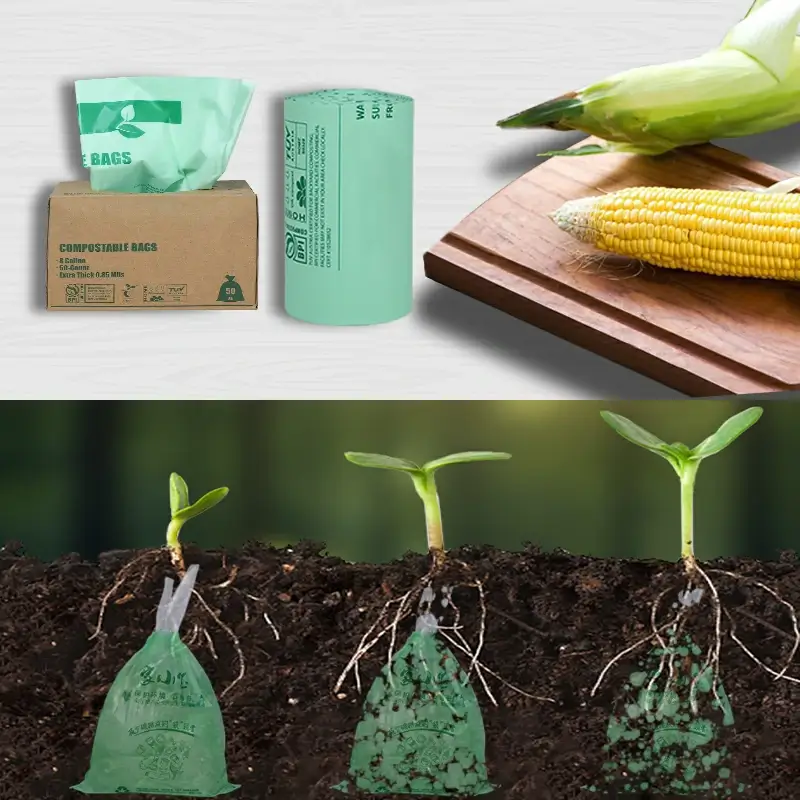
Potential Savings and Brand Benefits
For businesses, the calculation includes other factors:
- Waste Management: In some areas, using compostable bags for organic waste collection can potentially reduce landfill tipping fees.
- Brand Image: Aligning with sustainability resonates powerfully with today’s consumers. Using compostable packaging can enhance your brand reputation, attract eco-conscious customers, and foster loyalty. This “green halo” can translate into tangible business value.
- Regulatory Compliance: As plastic bans and regulations increase, switching to compliant compostable alternatives might become a necessity, avoiding potential fines or market access issues.
- Government Incentives: In some regions, there might be tax breaks or incentives for adopting sustainable practices, which could help offset the higher initial cost of compostable bags.
Value Beyond Just Dollars and Cents
So, is it “worth it”? If your primary goal is solely the absolute lowest upfront cost per bag, traditional plastic might still win. But if you’re considering the full lifecycle, environmental responsibility, brand alignment, and future-proofing your business against regulations, the value proposition of compostable bags becomes much clearer. For many businesses and environmentally conscious consumers, the answer is increasingly “yes,” the extra compostable bag cost is a worthwhile investment.
Can We Make Compostable Bags More Affordable?
While some cost factors are hard to control (like global raw material prices), there are ways to manage and potentially reduce the cost of compostable bags you purchase.
Innovation of Production Process
- Material Science: Developing new biopolymers or blends that are cheaper to produce or require less material for the same strength.
- Manufacturing Efficiency: Improving extrusion techniques, speeding up conversion processes, and reducing energy consumption.
- Supply Chain Optimization: Building more robust and localized supply chains for raw materials.
As these technologies mature and scale up, we can expect the baseline compostable bag prices to gradually decrease, making them more accessible. Manufacturers are constantly working on this!
Strategic Procurement: Optimizing Costs Through Volume and Specification
Distributors and businesses procuring significant quantities of compostable bags have opportunities to manage costs effectively through strategic purchasing practices.
- Economies of Scale via Bulk Orders: Consolidating requirements and placing larger volume orders is a primary method for reducing the per-unit cost of compostable bags. Manufacturers achieve greater efficiencies during longer, continuous production runs, often translating into substantial per-unit savings. Engaging with suppliers to understand volume-based price tiers is advisable.
- Standardization Benefits: Opting for standard industry sizes and specifications, where feasible, can mitigate the higher setup costs associated with unique custom designs, particularly for smaller order quantities. For recurring custom print orders, investing in printing plates upfront may prove more cost-effective in the long run compared to incurring repeated setup charges.
Cost Reduction Through Material and Packaging Choices
Further cost management can be achieved by carefully considering the product’s physical attributes and its secondary packaging.
- Material Gauge Optimization: Specifying the appropriate film thickness (gauge) is crucial. Utilizing the minimum gauge necessary to meet functional performance requirements avoids unnecessary material consumption and associated costs.
- Efficient Secondary Packaging: Evaluating the packaging used for the compostable bags themselves can yield savings. Simple, bulk-packed configurations in cartons generally incur lower material and labor costs compared to more elaborate retail-style boxes or dispensers. Furthermore, minimalist packaging often optimizes shipping density and reduces storage space requirements, contributing to lower logistical costs.
Summary
The reason compostable bags often carry a higher price tag isn’t arbitrary; it’s rooted in tangible factors: the cost of plant-based raw materials, the complexities of specialized manufacturing, the ongoing investment in R&D and certification, and the current dynamics of market demand and scale compared to traditional plastics.
While the upfront compostable bags cost is higher, their lower environmental impact and potential long-term benefits – from brand enhancement to regulatory preparedness – offer significant value. And by understanding the cost drivers, businesses like yours can make smarter purchasing decisions, leveraging strategies like bulk ordering and optimized specifications to manage expenses effectively.
The journey towards sustainable packaging solutions is ongoing, and while compostable bag prices reflect the current state of this evolving technology and market, the investment often pays dividends beyond the balance sheet. As demand grows and innovation continues, we can be optimistic about these greener alternatives becoming even more accessible in the future. Knowing the “why” behind the price empowers you to make the best choices for your business and the planet.

